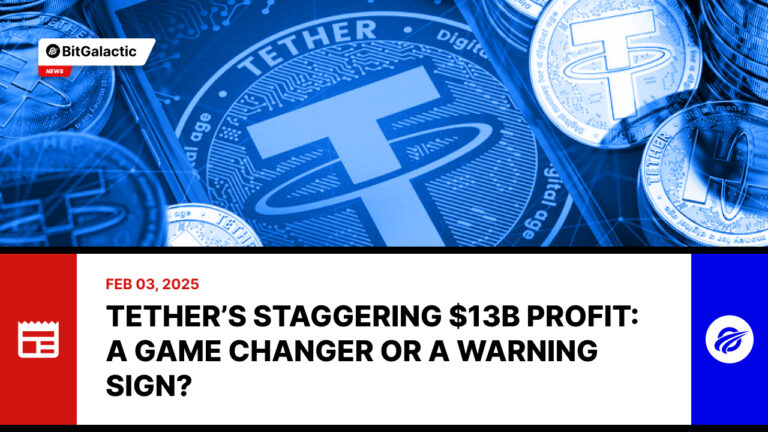Tether’s Staggering $13B Profit: A Game Changer or a Warning Sign?
Tether, the world’s leading stablecoin issuer, is no longer just a crypto utility—it’s morphing into a financial powerhouse. According to an attestation released by Italian accounting firm BDO, Tether raked in a staggering $13 billion in profit in 2024, doubling its $6.2 billion earnings from the previous year. This windfall stems from its strategic holdings in Bitcoin, gold, US Treasury bonds, and other financial instruments.
More notably, Tether’s equity skyrocketed 185%, reaching an eye-popping $20 billion. Such figures not only cement Tether’s dominance in the crypto space but also put it ahead of Wall Street behemoths like Blackstone, which reported a comparatively modest $5.4 billion in net income.
Wall Street Takes Notice
The financial industry cannot afford to ignore Tether’s meteoric rise. Its ability to generate outsized profits despite persistent regulatory scrutiny raises important questions about the stability and transparency of stablecoins. The issue came into sharper focus this week when Howard Lutnick, CEO of Cantor Fitzgerald and President Trump’s nominee for U.S. Commerce Secretary, was grilled about his firm’s ties to Tether during his Senate confirmation hearing. As one of the 24 primary dealers authorized to trade U.S. Treasuries with the Federal Reserve, Cantor Fitzgerald has played a critical role in managing Tether’s reserves.
The Dark Side of USDT’s Dominance
While Tether’s success is undeniable, its widespread adoption has come with significant controversy. The United Nations Office on Drugs and Crime reported that USDT is frequently used for money laundering, particularly by organized crime groups in Southeast Asia. Although Tether CEO Paolo Ardoino has pledged to work with law enforcement agencies, the lack of a Big Four accounting firm conducting a full audit continues to fuel skepticism.
Ardoino has openly admitted that Deloitte, EY, KPMG, and PwC are hesitant to audit Tether due to the regulatory uncertainty surrounding crypto. Instead, the company releases quarterly attestations—a step toward transparency, but one that still falls short of a comprehensive financial audit.
BitGalactic’s Take: A Sustainable Model or a House of Cards?
From BitGalactic’s perspective, Tether’s profit surge highlights both the potential and the risks of stablecoins as financial entities. On one hand, Tether’s decision to back USDT with $113 billion in U.S. Treasuries underscores its commitment to using the safest fixed-income assets. On the other hand, the absence of a top-tier audit and its association with illicit activities create lingering doubts about its long-term sustainability.
Moreover, while Tether issued $23 billion in new USDT in Q4 alone—bringing its total issuance for 2024 to $45 billion—its closest rival, Circle’s USDC, still maintains a market value of $53 billion. This signals an ongoing battle for dominance in the stablecoin sector.
Final Thoughts: Unstoppable Growth or an Unstable Foundation?
Tether’s latest financial performance confirms that stablecoins are no longer just crypto-native assets but influential players in global finance. Yet, the lack of a traditional audit, persistent legal scrutiny, and concerns over illicit use mean that investors and regulators must remain cautious. Will Tether’s financial model stand the test of time, or is its success built on an unstable foundation? The next few years will be crucial in determining whether Tether cements its legacy as a financial titan—or becomes the next cautionary tale in crypto history.
Share this post


